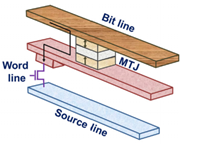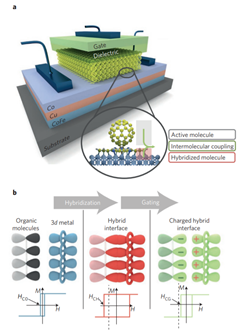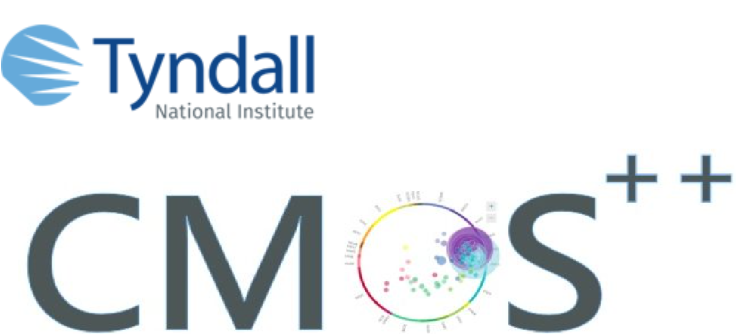Spintronics (meaning “spin transport electronics”) is a multidisciplinary research field to which aims to utilize the spin and magnetic moment of an electron in addition to the electron charge. As spin and magnetic moment direction are not usually conserved when an electron flows through a solid material, the majority of electronic devices currently in production do not utilize the spin and magnetic moment which are intrinsic properties of an electron.
Recently, it has become possible to manufacture materials in which spin direction is conserved leading to the development of a magnetic random access memory where the operation is based on utilising a spin polarised current. The spin polarised current can switch domains in a magnetic layer, leading to a very high endurance and low power random access memory. Fig. 1 shows a schematic illustration of a spin transfer torque magnetic random access memory (STT-MRAM).
The utilisation of electron spin also has potential for the development of novel spin-based digital Boolean devices, which could enable logic functions operating in the femto or attojoule range for ultra-low power electronics. A new spin based logic device was recently introduced by M. Cinchetti et al. [2] which is shown in Fig. 2. The fundamental building block of the technology comprises one, or a few, molecular layers strongly hybridized with the inorganic element, on top of which is the dielectric layer and gate electrode. This introduces the possibility of voltage gating the spin polarised current which flows through the device to realise a spin based field effect transistor. Tyndall have recently joined an EU Future and Emerging Technologies project, working with CNR in Italy, TU Dortmund and Eberhard Karls University of Tubingen in Germany, Trinity College Dublin in Ireland, NanoGUNE, in Spain, Institute of Jožef Stefan in Slovenia, and University of Leeds in the UK, to realise the device concept.


References
- S. Bhatti, et al., Spintronics based random access memory: a review. Materials Today 20, 530–548, 2017. https://doi.org/10.1016/j.mattod.2017.07.007
- M. Cinchetti, V. Dediu, and L. Hueso, Activating the molecular spinterface. Nature Mater 16, 507–515, 2017. https://doi.org/10.1038/nmat4902

